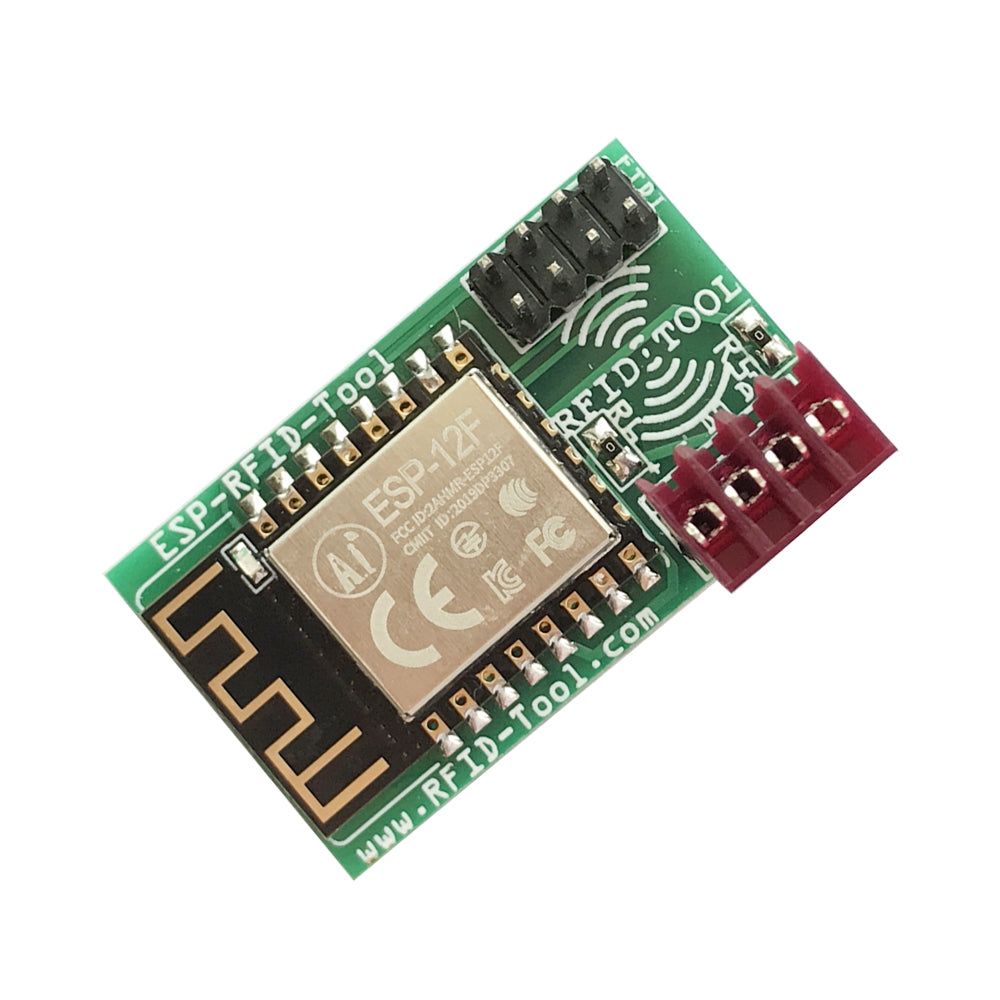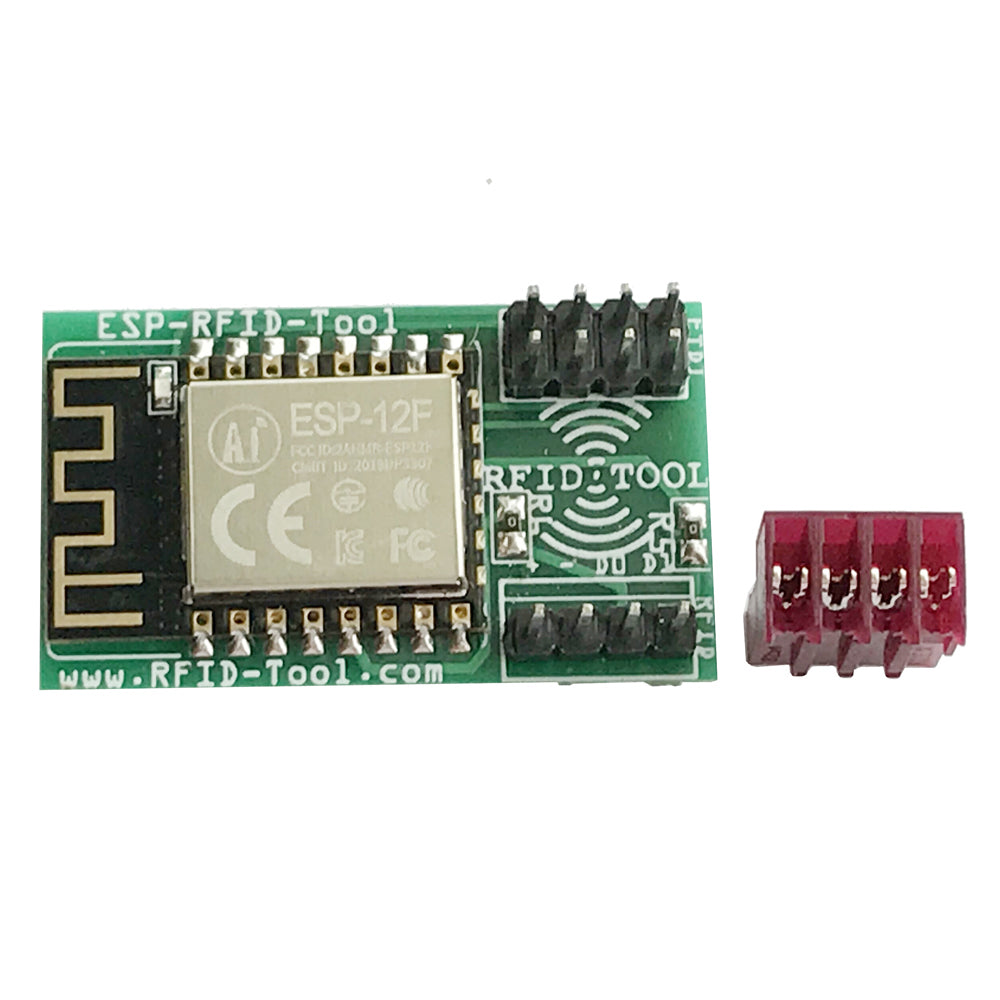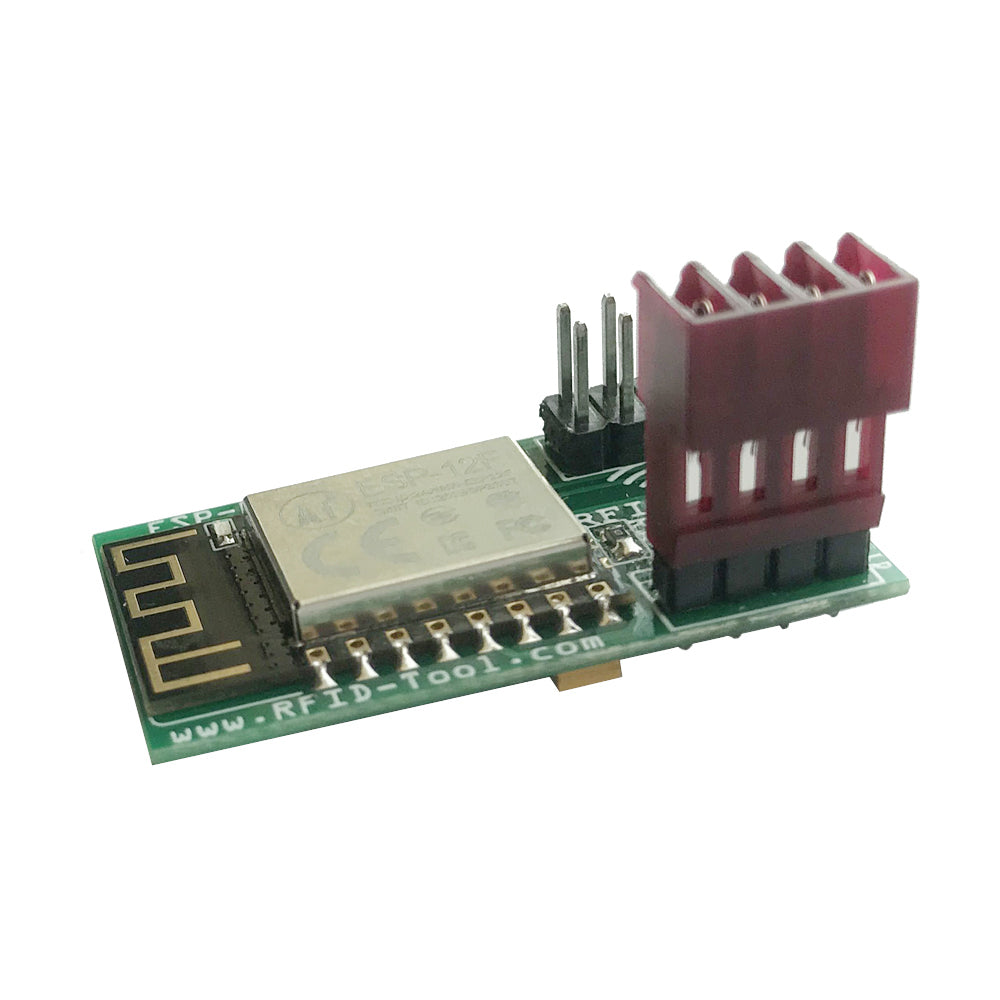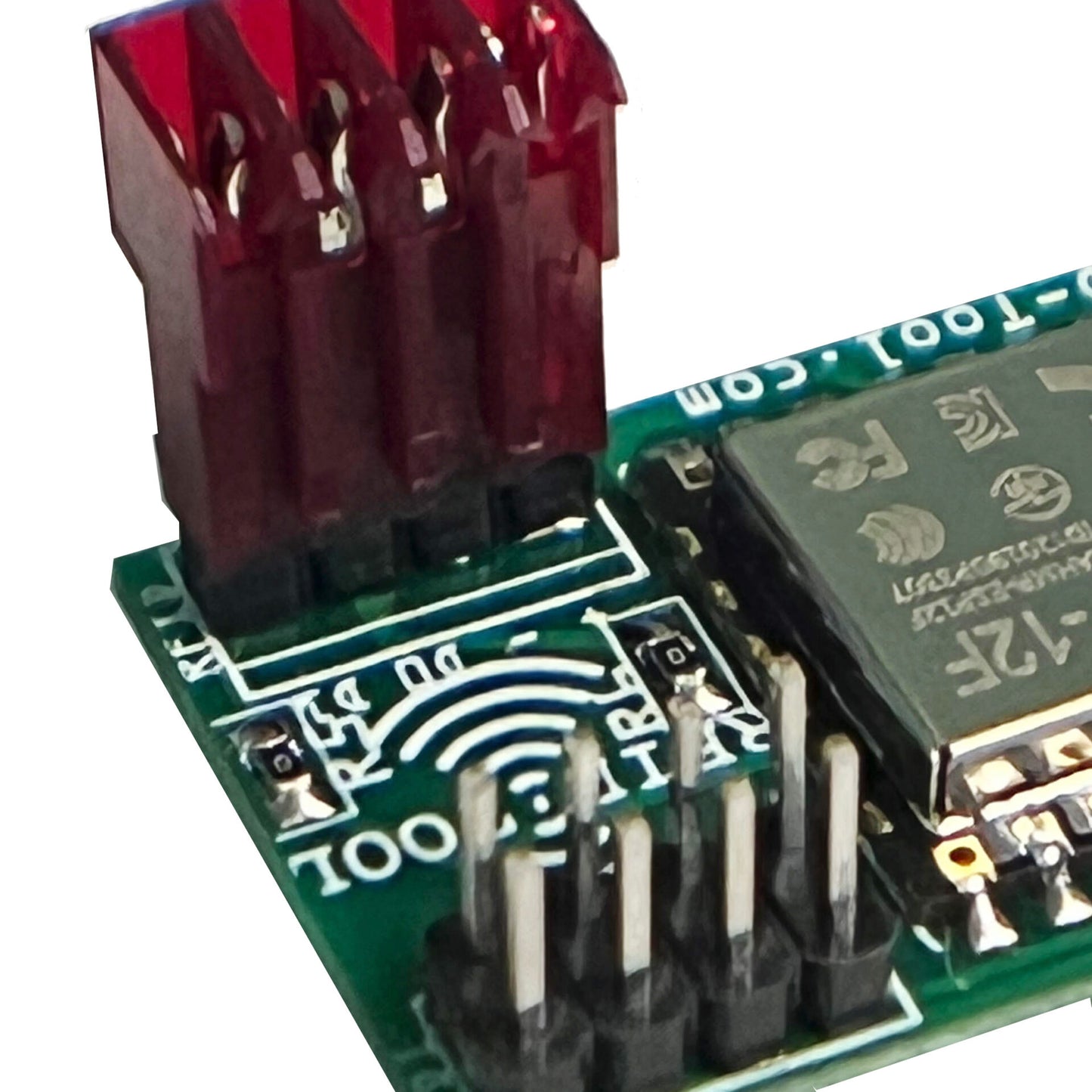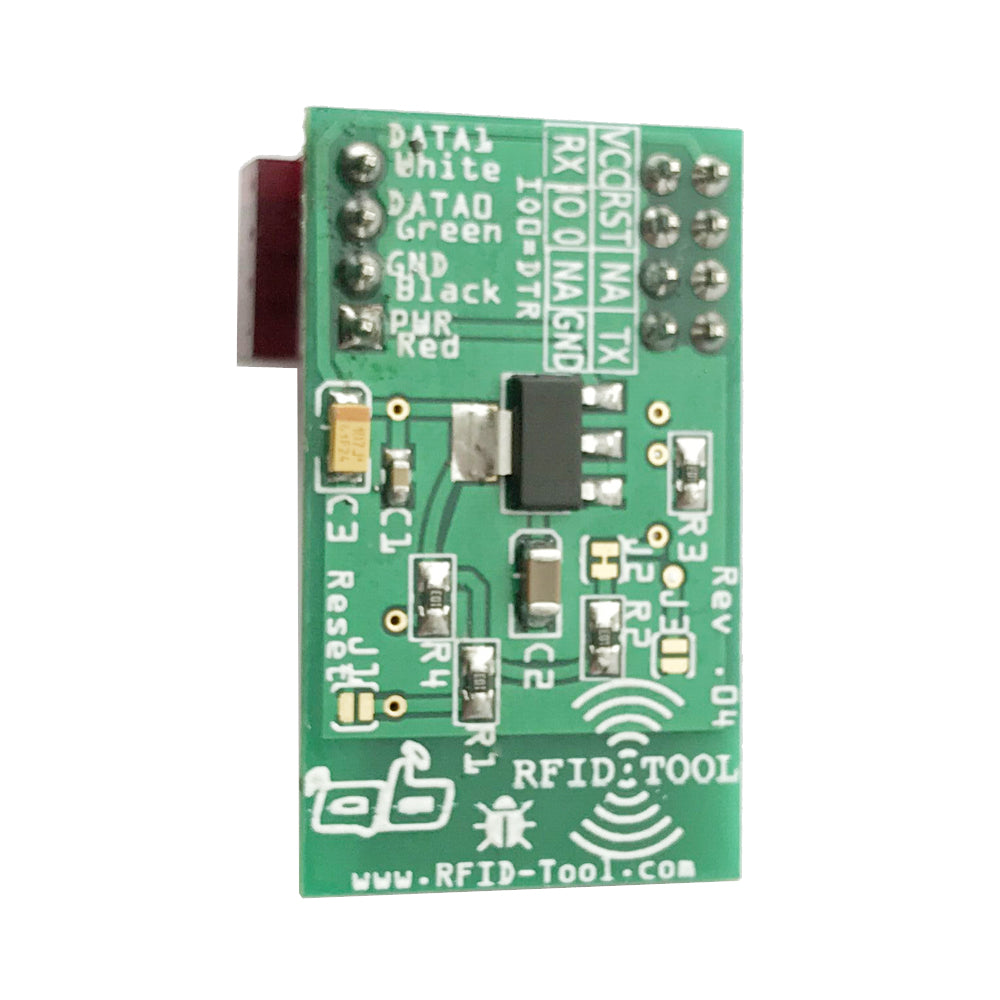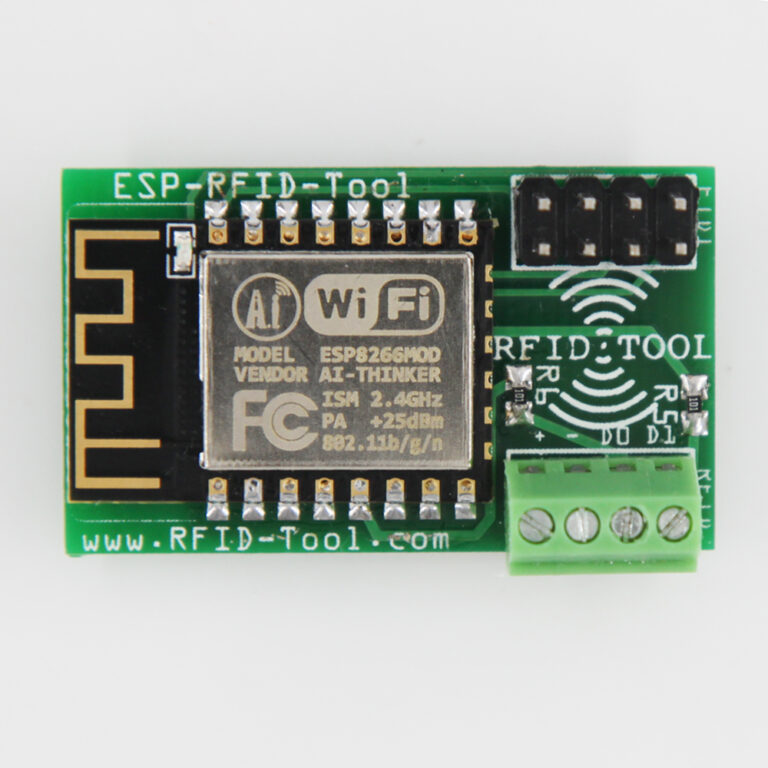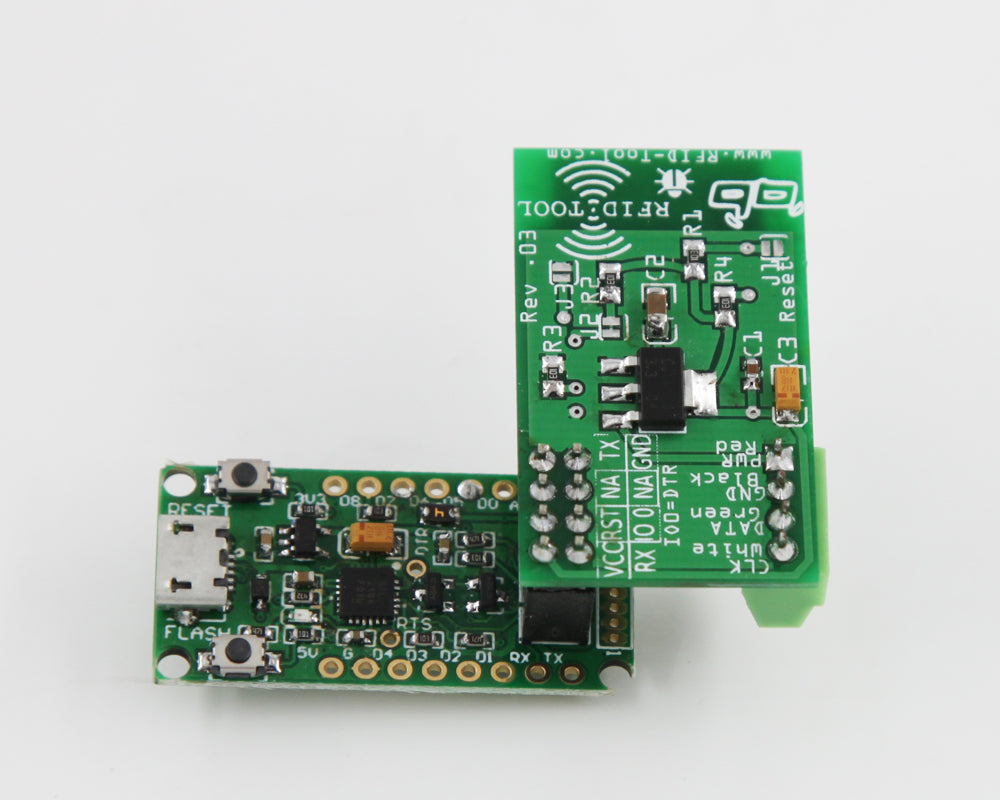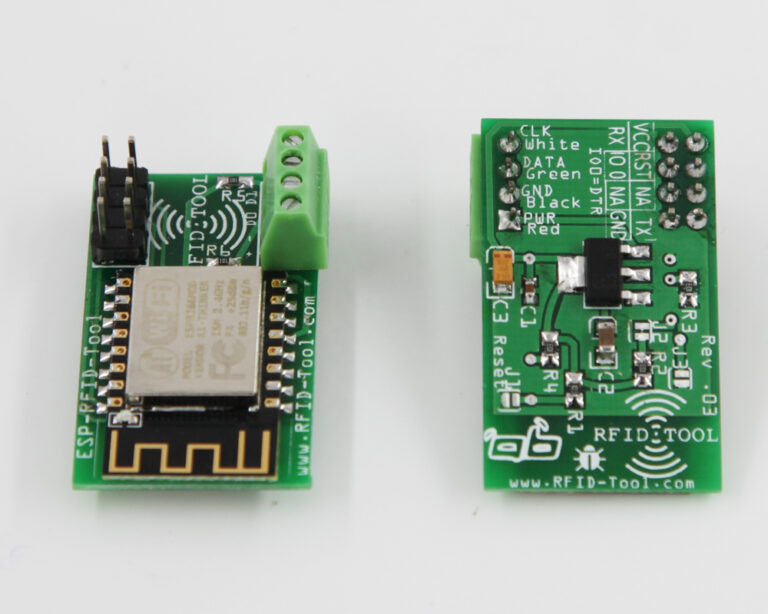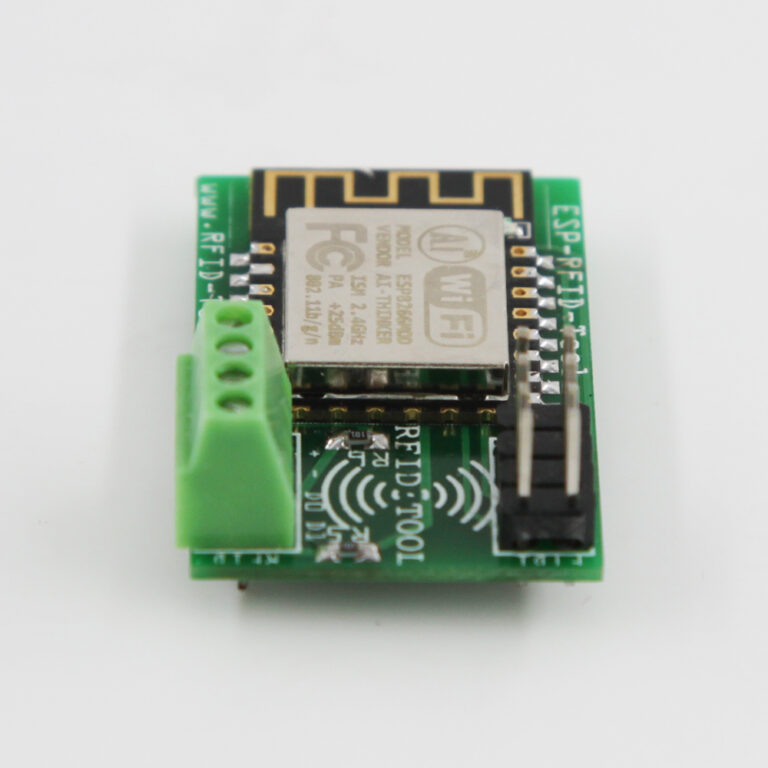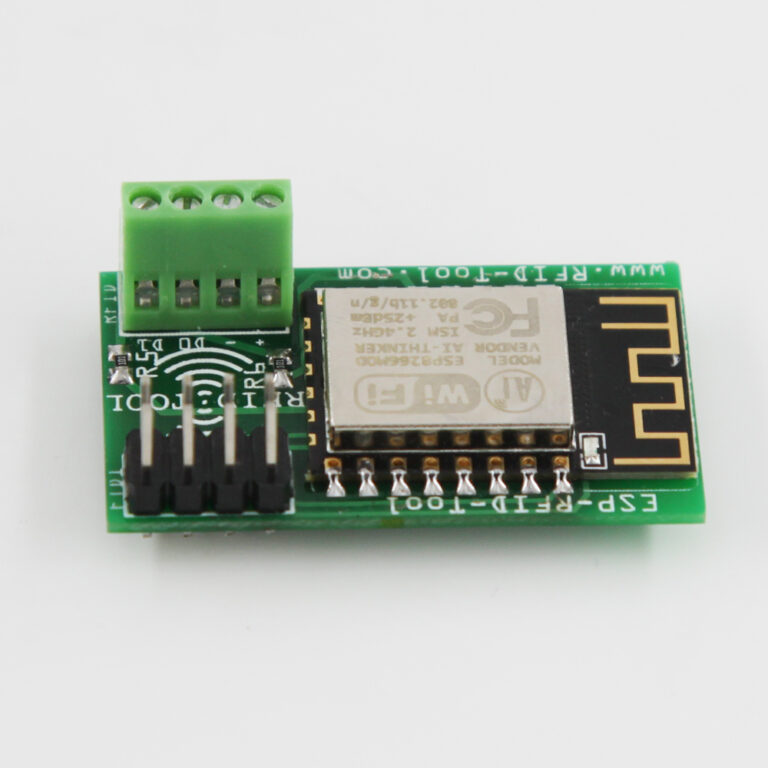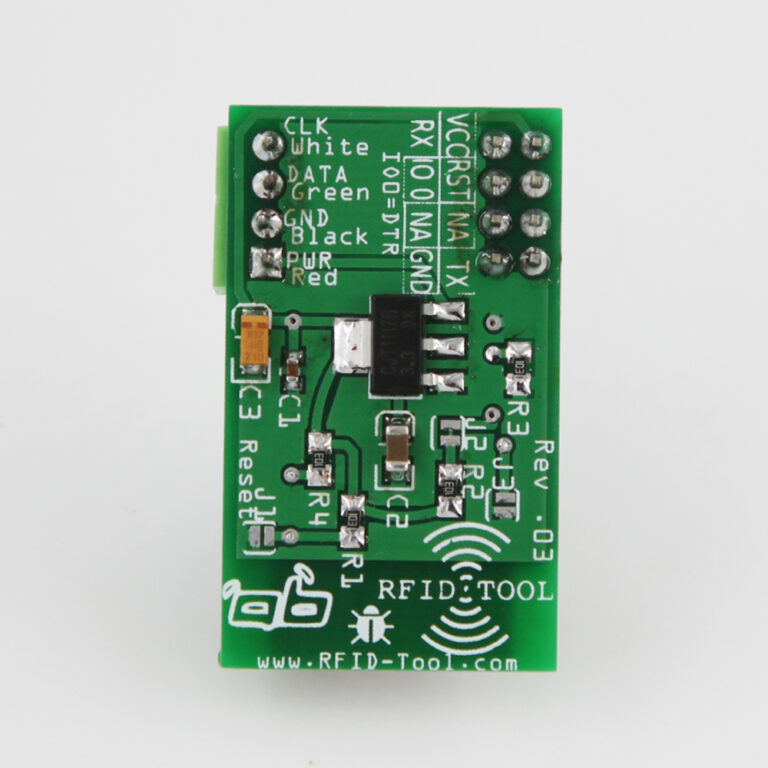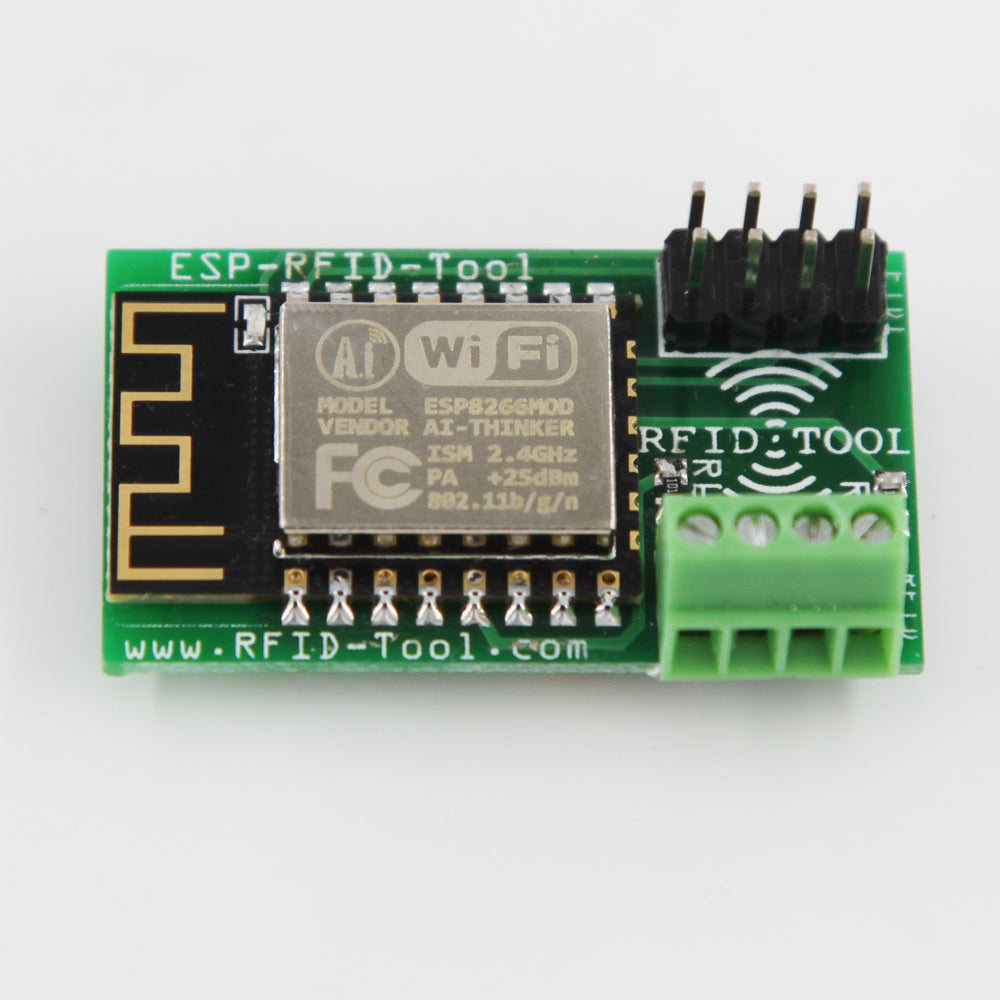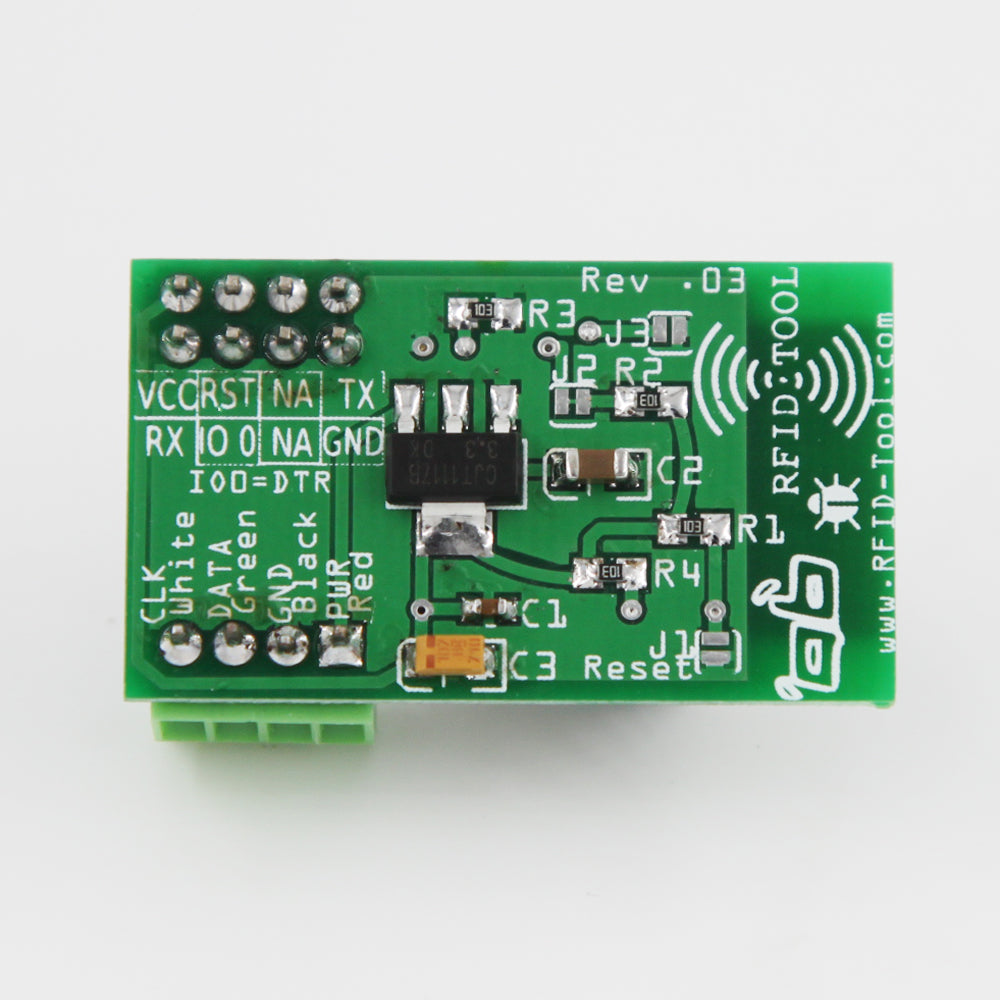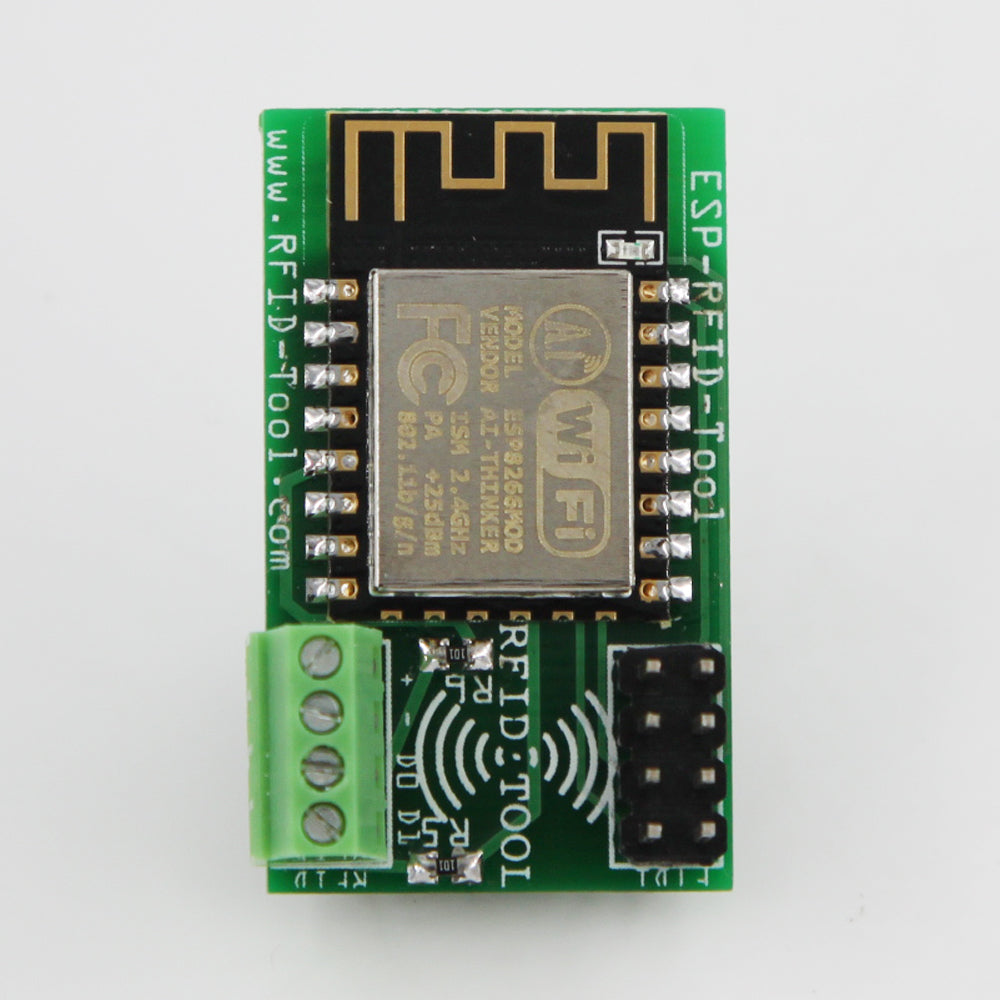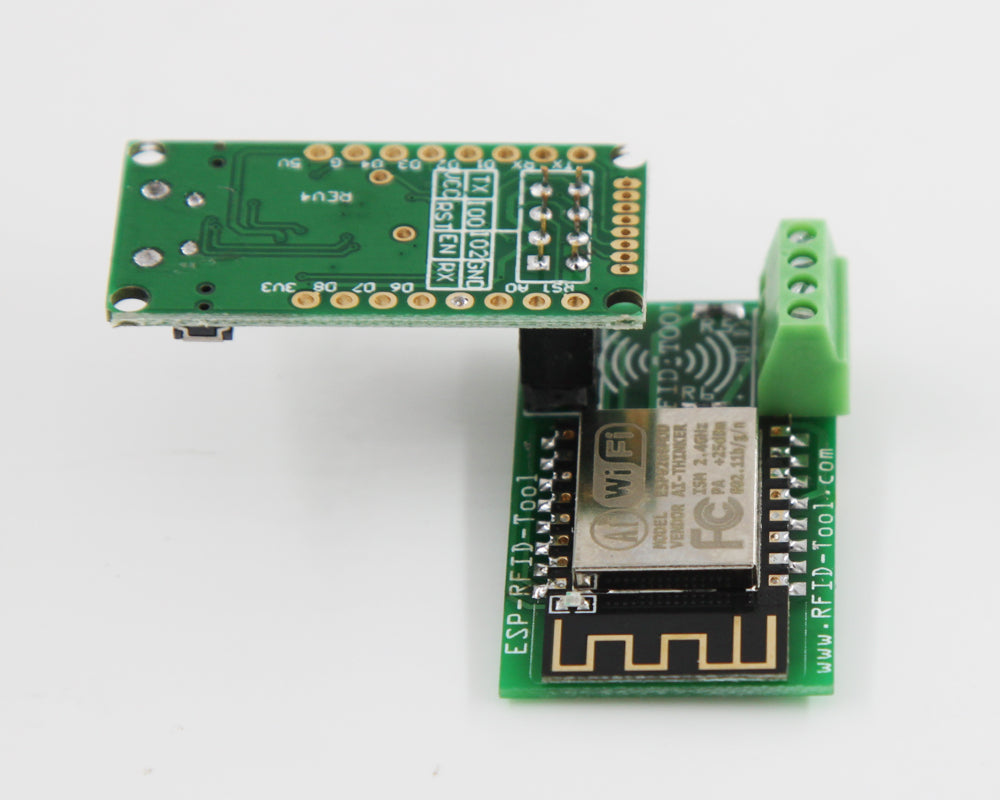RFID Tool
ESP Key RFID Wiegand Interception Tool
ESP Key RFID Wiegand Interception Tool
Couldn't load pickup availability
ESP RFID Tool is a WiFi enabled tap for the Wiegand protocol, which is the most widespread protocol for proximity card reader systems. ESP RFID Tool can be installed in a reader to passively sniff and log Wiegand data.
This version includes a punch down connector for a more convenient deployment.
For the latest instructions, please refer to: https://github.com/rfidtool/ESP-RFID-Tool/blob/master/README.md#how-do-you-install-it
Video Demos of Capturing Credentials using various technologies that utilize a Wiegand Interface:
- Performing a REPLAY ATTACK using the Experimental TX feature: https://youtu.be/u1y7UZpup9I
- Brute forcing PIN codes using the Experimental TX feature: https://youtu.be/OZCaypGBVv4
- Portable HID 5375 Long Range RFID Reader: https://youtu.be/B86926CHImE
- HID 5355 RFID/Keypad Reader: https://youtu.be/ojIpcY8Y3KQ
- HID multiCLASS RM40 RFID/Magstripe Reader: https://youtu.be/9OccRaLxXg8
- HID multiCLASS RFID Reader: https://youtu.be/2sCLkpuxAks
- RFID/Biometric/Keypad with Electronic Deadbolt: https://youtu.be/0o8r_ufRrFo
Firmware:
- Official
- ESP-RFID-Tool: https://github.com/rfidtool/ESP-RFID-Tool/releases
- Releases >=1.1.0 are compiled with esp8266 board manager package 2.4.1
- Releases < 1.1.0 are compiled with esp8266 board manager package 2.3.0
- ESP-RFID-Tool: https://github.com/rfidtool/ESP-RFID-Tool/releases
- Unofficial
- Port of Tastic RFID Thief: https://github.com/exploitagency/ESP-RFID-Thief/releases
Intended use cases
- Security researchers performing red team assessments.
- Capturing card values to later be cloned.
- Replaying raw binary captures.*(see note below)
- Fuzzing access control systems.*(see note below)
- Brute forcing PIN codes.*(see note below)
- Denial of Service mode.*(see note below)
- To create a standalone device for capturing credentials or testing badges and or card readers without the need for a Wiegand Controller.
- Add a battery and a card reader to make the unit portable.
- Add a benchtop power supply to use for testing hardware.
- Installers troubleshooting issues with a card reader, the data lines, or even testing for a faulty card.
- Useful for merchants or surplus resellers who are testing if access control equipment is functional.
- Hobbyist experimenting with various systems that utilize a Wiegand Interface.
- Simulating an access control system using multiple units of ESP-RFID-Tool.
- RFID-Tool is not intended to be used in any unlawful manner.
What is it?
A universal data logger that captures the raw binary data from a standard 5V Wiegand Interface. The device is capable of logging the credentials for access control systems or nearly any device that utilises a Wiegand Interface such as RFID card readers, pin pads, magnetic stripe systems, barcode, and even some biometric readers. Wiegand Interfaces also do not have to be limited to just access control systems. The main target group for this device is 26-37bit HID cards. For known card types both the binary and hexadecimal data is displayed directly in the log file for easy badge identification and also in case a clone of a card may be needed. For unknown card types only the raw binary data is shown.
How do you install it?
The device may be installed directly into an existing system drawing its power from the preexisting wiring or it can also be used to turn a reader into a standalone portable unit for data logging when a battery is added. Wiring is simple and consists of 4 wires, (+), (-), D0(Green), and D1(White). The device is capable of operating on voltages ranging from around 4.5V up to a maximum of 12v. Commonly found voltages are 12V and 5V. **(See Installation Notes Below)
How do you access the logs?
Access to the log files and various settings is provided via a web based interface. The device has WiFi capabilities and can be set up to spawn its own access point or set to connect to an existing network. In the event you get locked out of the web interface you can bridge the J3 jumper on power up or while resetting the device to regain access without losing your log files.
I want to know a little more…
The hardware is based on an ESP12 WiFi chip with a full TCP/IP stack and Microcontroller Unit. The software is open source licensed under the MIT License and will be released the day the product is launched. The software will reside in this GitHub repo so it may be reviewed by the community. We will accept various pull requests from the community after being reviewed if it improves the value of the device for others. The software was written in the Arduino IDE so both hobbyist and professionals will have no issue modifying the code if they so choose. A Wiegand Interface operates using 3 wires, a ground, Data0, and Data1. A zero is sent when D0 goes low and a one is sent when D1 goes low, the other line remains high during this time. The timing is 40uS from low to high on a line with 2mS between bits. The software logs this binary output to a file and if the device thinks it is a known card format the preamble is guessed(not sent by card reader but it is the same for all cards of a specific format, our primary target is 26-37bit HID cards) and both the raw binary and hexadecimal data is logged. For unkown card formats only the raw binary output is logged with no guess at the preamble and without showing the data in hexadecimal format to prevent confusion. If you know what kind of card was captured, simply look up the preamble and add it to the beginning of the binary then typically convert it to hexadecimal format to make a clone of a card. It is possible the card is actually an unknown format and the preamble was guessed incorrectly with the device thinking it was a known card format(the guess is based on the bit count output by the reader), if this is the case in the log file there is a literal space in the binary between the preamble and the card data, simply ignore the preamble. When replaying a captured credential*(see note below) you do not include the preamble as that is not output by the card reader but instead you only replay*(see note below) the actual card data as output from the reader. You only need to worry about the preamble if making a clone of a card. The primary function of this device is for logging the raw binary data as output from a Wiegand Interface. You can read from 1 bit all the way up to 4,096 bits. The default buffer setting only allows 52 bits and must be manually increased from the settings page accessible from the web interface.
*Experimental TX Mode
The device was made with minimal hardware to keep costs extremely low and in reach of hobbyist and also so security professionals can buy multiple units and also use them without the fear of losing a unit. This being said there are no level shifters on the board.(It is possible that in the future a PRO version may be released) This means that with the current hardware the device can work with a 3V3 Wiegand Interface as well as a 5V Wiegand interface because the hardware operates at 3V3 and is also 5V tolerant. The drawback of this is that not all 5V Wiegand controllers are guaranteed to be triggered when replaying or fuzzing data because only 3V3 is output from the device. There is also a risk when the device is in TX mode and the output goes low for 40uS, if the device were to also receive data during this time there will be a short. For this reason be sure that absoulutely no cards are being scanned while the device is in TX mode. The device does not go into TX mode until you press on a form submit button and as soon as the data is done being transmitted it goes back into listening mode. For the reasons above TX mode is for experimental use only and was designed primarily for easily debugging the software when making changes.(two units were tied together)
Use transmit mode at your own risk, it is not officially supported. Consider it a bonus in the software.
**Installation Notes
Click here for wiring diagrams
Click here to see connector options
- Make sure the reader outputs data in the Wiegand format
- Connect D0 on device to D0 on reader
- Connect D1 on device to D1 on reader
- Connect + on device to + on reader
- Connect – on device to – on reader
- The ESP-RFID-Tool accepts 4.5-12v but you must also be sure to supply enough voltage and current to power your reader if creating a standalone or portable unit.
- SAFETY: It has come to my attention that the voltage regulator used on the commercially available units that you may find for sale is different than the voltage regulator I originally chose for this project. Also due to global chip shortages and the possibility of manufacturers substituting components I am downgrading the absolute maximum voltage rating to 12v as in you may be stressing the unit to its limits at this voltage and extra care should be taken. Most of my smaller portable prototypes ran at around 9v(x6 AA Batteries) and I found this to be more than adequate, remember that you can always power your reader and the RFID-Tool unit separately if needed and I suggest supplying your project with the lowest possible voltage that you can get away with. In fact, I have found multiple readers that run just fine at less than the recommended voltage. Note that I did not notice a significant range increase in my original testing between supplying 12v and 24v to my reader(I do not recommend this as I tend to abuse the specs for what I am testing, and I was using a different voltage regulator in my prototype). Also be advised that most commonly used batteries produce more than the commonly stated nominal voltage at a full charge. It may also be a good idea to apply a heatsink to your voltage regulator especially if you notice that the unit runs hot at your chosen voltage. It is also never recommended to leave your device unattended. Please be safe and take all necessary safety precautions when testing your setup.
- OPTIONAL: Connect 4.5-12v battery into the same + and -(only if building a portable unit, do not add a battery if implanting device into an existing installation, or if you do use a battery do not connect the + wire from the existing installation to your device, only tie in the GND -)
- NOTE: At a minimum D0, D1, and GND(-) must be connected to the reader for proper function, no matter the power source.
- Configure settings
- See Below
Making Sense of the Binary Data
Flashing Firmware
OPTION 1: OTA via the Web Interface:
- Download one of the latest releases from
- Login to the device’s admin panel and upgrade the firmware.
OPTION 2: Arduino IDE:
- Use the ESP Flasher R4 by April Brother:
- Clone/download the source.
- Add these libraries:
- ArduinoJson library 5.13.1 by Benoit Blanchon
- ESP8266FtpServer.h
- Choose the board NodeMCU 1.0.
- Upload.
Software Help
Accessing ESP-RFID-Tool Web Interface
SSID: “ESP-RFID-Tool”
URL: http://192.168.1.1
Configure ESP-RFID-Tool
Default credentials to access the configuration page:
- Username: “admin”
- Password: “rfidtool”
Default credentials for ftp server:
- Username: “ftp-admin”
- Password: “rfidtool”
WiFi Configuration:
Network Type:
- Access Point Mode: Create a standalone access point(No Internet Connectivity-Requires Close Proximity)
- Join Existing Network: Join an existing network(Possible Internet Connectivity-Could use Device Remotely)
Hidden: Choose whether or not to use a hidden SSID when creating an access point
SSID: SSID of the access point to create or of the network you are choosing to join
Password: Password of the access point which you wish to create or of the network you are choosing to join
Channel: Channel of the access point you are creating
IP: IP to set for device
Gateway: Gateway to use, make it the same as ESP-RFID-Tool’s IP if an access point or the same as the router if joining a network
Subnet: Typically set to 255.255.255.0
Web Interface Administration Settings:
Username: Username to configure/upgrade ESP-RFID-Tool
Password: Password to configure/upgrade ESP-RFID-Tool
FTP Server Settings:
Note: Supports Passive(PASV) Mode Only!
- Enabled: Turn FTP Server ON
- Disabled: Turn FTP Server OFF
Username: Username to login to ftp server
Password: Password to login to ftp server
Power LED:
- Enabled: Turn ON Power LED
- Disabled: Turn OFF Power LED
RFID Capture Log:
Useful to change this value to differentiate between facilities during various security assessments.
File Name: File name to save captured RFID tags to for the current security assessment.
List Exfiltrated Data
Displays all log files containing RFID tag captures.
Format File System
This will erase the contents of the SPIFFS file system including ALL RFID tag captures.
Formatting may take up to 90 seconds.
All current settings will be retained unless you reboot your device during this process.
Upgrade ESP-RFID-Tool Firmware
Authenticate using your username and password set in the configuration page.
Default credentials to access the firmware upgrade page:
- Username: “admin”
- Password: “rfidtool”
Select “Browse” choose the new firmware to be uploaded and then click “Upgrade”.
You will need to manually reset the device upon the browser alerting you that the upgrade was successful.
Jumpers
- J1: Bridge to reset the board(your FTDI doesn’t have a reset button?)
- J2: Cut the trace to disable DTR pin after programming then use it as an additional IO(continue updating firmware via web interface)
- J3: Bridge this during a power cycle to restore default configuration without losing your log files.
Restore Default Settings
- Option 1: Go to settings under web interface and choose restore default configuration.
- Option 2: Bridge J3 before booting the device. (Either before powering on or bridge it and reset the device)
- Option 3: Connect via serial(9600 baud) and send the command “ResetDefaultConfig:” without quotes.
History
I pushed the design for the original prototype to GitHub back in September of 2016 albeit under a different repo. I was using an Adafruit Feather Huzzah running some code that I had modified porting the Tastic RFID Thief(by Fran Brown from Bishop Fox) to the ESP12S chip. At the time no sort of Wiegand logger existed offering WiFi capabilities and providing an easy to use web interface for accessing the log files.(I could not find one so I created it) During the second evolution of the project I decided to design dedicated hardware and I lightly upgraded the software. It was open source hardware and it was out there on GitHub but still not easily available to the masses. Not everyone is confident in surface mount soldering and even for me it was time consuming assembling boards for personal use. It was then that I realized there is a need for an affordable device like mine to be mass produced so anyone that has a legitimate for need one can have access to it. During the third stage I redesigned both the software and the hardware and decided to contact April Brother to see about them manufacturing it and selling it for a fair price. That is when ESP-RFID-Tool was born.
Share
